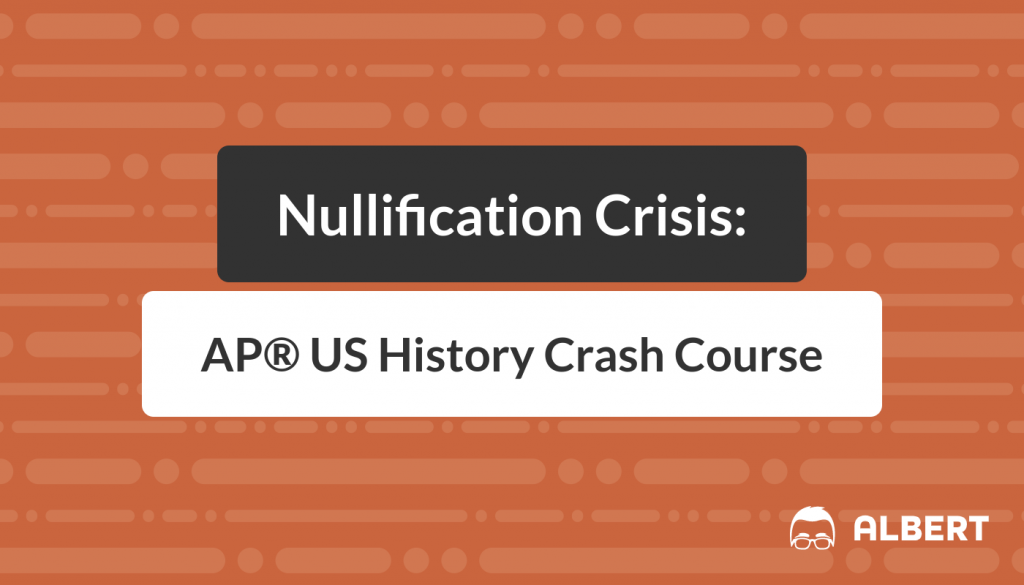The Nullification Crisis was one of the most dramatic scandals to sweep the nation. Watching the headlines during the presidency of Andrew Jackson was like watching a reality television show today: everyone was wondering what would happen next.
But to understand the Nullification Crisis and what it was, you first have to understand all of the events that lead up to the incident.
Let’s go back to the election of 1824. On one side, you have Andrew Jackson: a real popular “man’s man”; a dedicated war hero in the 1815 Battle of New Orleans. On the other side, you have John Quincy Adams: son of the second President of the United States and the Secretary of State under President James Monroe.
Now, what we’re to understand is that Jackson, being incredibly popular, should have won the election of 1824 by a landslide. But that’s not exactly how it played out.
Although Andrew Jackson secured the Electoral College with 99 votes and achieved 43% of the popular vote, he did not win. This was because not one single candidate running for the presidency obtained the majority vote in the Electoral College. When no contender secures that majority vote, it is then up to the House of Representatives to pick the candidate they see fit best for President.
Even then, Andrew Jackson did not win the election. Henry Clay, a fiery rival of Jackson, teamed up with John Quincy Adams to forge a coalition that secured Adams’s seat in the White House. This act came to be known as the “Corrupt Bargain” by Jackson’s supporters. This was only the beginning of a long sequence of years marked by bad blood between Jackson and Adams.
Many supporters of Jackson plotted to sabotage the presidency of Adams. Adams was from New England, where industrialization and manufacturing were becoming a very prominent way of life. Taking advantage of this, Jackson’s supporters pushed a scheme through Congress that would ruin Adams’s reputation. This proposal would raise the tariffs on goods manufactured in the North, making it seem like Adams only cared for his homeland; since the tariff would benefit the North and devastate the rest of the country.
However, this sneaky exploit proved to be unnecessary when Jackson was elected President in 1828. In fact, the stunt even backfired, making Jackson look like he was the one introducing the tariff. This tax became known as the “Tariff of Abominations” which very quickly sparked the Nullification Crisis.
What was the Nullification Crisis?
The Nullification Crisis was a movement that campaigned against the Tariff of 1828. Supporters of the Crisis, also known as “nullies,” stood by the belief that states had the right to nullify federal laws as written in the Constitution.
Who did it affect?
The state of South Carolina was particularly outraged by the tariff. Its economy was already experiencing difficulties, being primarily agricultural in an industrializing country. Someone in South Carolina’s legislature anonymously published a pamphlet called “The South Carolina Exposition” later that year. This document suggested that the tariff be nullified because it was unjust and unconstitutional.
To make things even more scandalous, it came to surface that the author of “The South Carolina Exposition” was none other than Jackson’s Vice President himself, John C. Calhoun.
How was it solved?
Calhoun convinced President Jackson and Congress to enact another tariff known as the Tariff of 1832, which lowered the tax rates a small amount. The South was still not happy with this bargain. South Carolina wanted the tariff to be nullified all together, and they were threatening to secede from the Union if their demands were not met.
Outraged by this betrayal, Jackson quickly gathered up an army and sent it to South Carolina. He then wrote up a Nullification Proclamation, stating that it was impossible for South Carolina to secede over a tariff. A “Force Bill” was also put into place, stating that Jackson’s army could administer the tariff by force.
Vice President Calhoun soon resigned from working under Jackson to become head of the nullification cause. While in this position, he enlisted Henry Clay, who still detested Jackson (remember the 1828 election?), to write up a proposal for a compromise tariff.
The Compromise Tariff of 1833 was passed through Congress, and brought significant relief to the Southern states. The tariff still wasn’t as low as South Carolina was demanding, so in the Compromise, it was stated that the state nullified all previous tariffs put in place by Jackson. The initiation of a new tariff accomplished this task anyway, but Jackson did not argue this point, and the Southerners finally felt victorious in the Nullification Crisis.
In AP® US History, it is important to understand South Carolina’s outbreak of tenacity that eventually led to the secession of the state before the Civil War, and it is vital to recognize the confidence the South gained when their terms were finally met at the end of the Nullification Crisis. To do well in AP® US History, it is very important to recognize this connection and the events of this Crisis, as well as the state of the economy at the time of the Crisis; this was an essay question on the 2008 exam.
Looking for AP® US History practice?
Kickstart your AP® US History prep with Albert. Start your AP® exam prep today.








